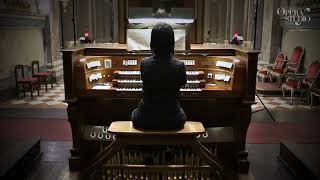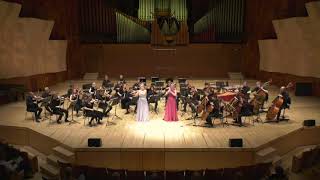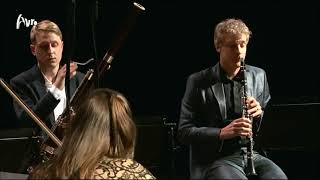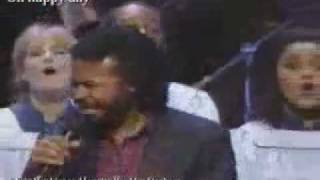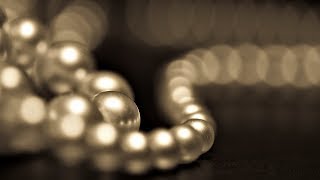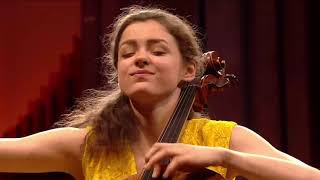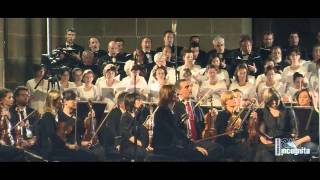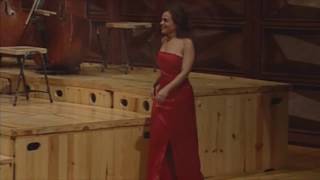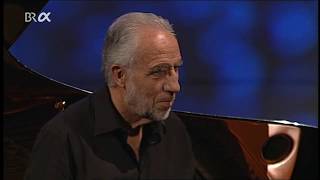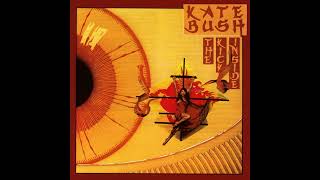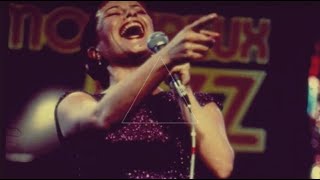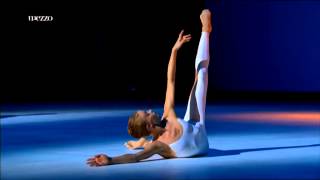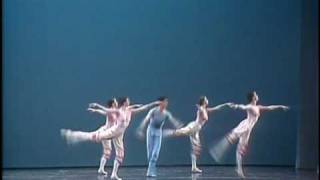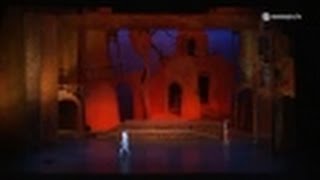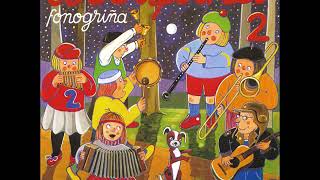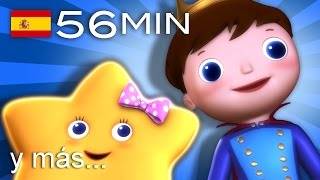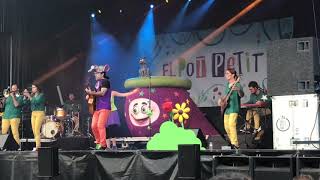March 31 is the Centenary of the Birth of Bach and Haydn
Recommended music videos for initiation to classical music
Toccata (from Italian toccata, "to play") is a piece of Renaissance music and Baroque music for keyboard instruments, such as the harpsichord or organ, usually with a free form that generally emphasizes the skill of the performer with a succession of fugal sections that alternate with others of a free style and with an improvisational character. In the more advanced phases of the development of the toccatas, these fugal sections will be the culmination and will have relative independence; so that in the eighteenth century the association of toccata and fugue was common.
La Fuga is a musical genre in which musical ideas called subjects are superimposed. Several voices or instrumental lines are structured through imitation or repetition of the same that appear in different tonalities and in the structured development of the exposed themes. When this technique is used as part of a larger piece, it is said to be a fugal section or fugato ; a small fugue is called a fughetta. Until the end of the Middle Ages the term fugue was widely used to describe canonical structures and works, in the Renaissance it was used to specifically designate works based on imitation. It would not be until the 17th century when the term fugue would take on its current meaning.
The Toccata and Fugue in D minor , BWV 565 is a piece of organ music written by Johann Sebastian Bach . The piece opens with a toccata section (0´31´´ ) , followed by a fugue (3´11´´) that ends in a coda (7´59´´ ) . The first publication of the piece, in the era of Bach 's “renaissance”, was in 1833 , thanks to the efforts of Felix Mendelssohn , who also performed the piece in an acclaimed concerto in 1840 ; Familiarity with the piece improved in the second half of the 19th century and further in the 20th century with the piece's inclusion in Walt Disney 's animated film Fantasia (on Stokowski orchestral transcription), until this composition reached be considered the most famous work in the organ repertoire.
Maria Luisa Veneziano is a pianist, organist, musicologist and radio producer, who graduated in piano at the "S.Cecilia" Conservatory in Rome with M° Aldo Tramma , in Chamber Music with M° Marco Lenzi and in Musicology with M ° Lucia Bonifaci and specializes with Andràs Schiff on Bach 's keyboard work. He continued his studies at the Pontifical Institute for Sacred Music in Rome , at the “ G. Rossini ” in Pesaro , in Paris and in Munich . He has participated as a solo organist in numerous and renowned organ festivals in Ljiublijana, Roccamassima, Emilia Romagna, Teramo, Pesaro, Bergamo, Saint Denis in Paris ... in which he has enjoyed great critical and public success and has collaborated with renowned artists. National and international.
Franz Joseph Haydn (1732-1809), Austrian composer whose brother Michael Haydn was also a notable composer, was one of the main pillars on which classicism (1750-1810) was based. At the age of six he began his studies on the harpsichord and violin. At the age of eight he was admitted as a chorister at St. Stephen's Cathedral in Vienna where he continued his musical studies. After changing his voice, he had to survive by working multiple jobs, while studying composition by analyzing the works of Carl Philipp Emanuel Bach . He maintained a close friendship with Mozart and was a teacher of Beethoven . He established the main bases of the sonata form and the formal structure of the string quartet and the symphony . He died at the age of 77 in Vienna .
The Concerto is a musical form written for one or more solo instruments accompanied by an instrumental ensemble. It was Vivaldi who established the fundamental bases of its structure with three movements ( I fast-II slow-III fast ) and presented as a dialogue between the soloists and the instrumental ensemble. Starting from classicism, especially from the bases created by CPE Bach , the first movement is built following the patterns of the sonata form (exposure, development and re-exposition) , while the second and third movements adopt free and punctual forms. Frequently, at the end of the first and/or third movement, the soloists have a cadence without orchestral accompaniment with which they can show off their virtuosity.
In the video that we offer today, the Danish Steinaa sisters ( María on the flute and Eva on the oboe) offer us the first movement of Haydn 's Concerto for flute, oboe and orchestra no. 1 .
Ludwig van Beethoven (1770-1827) together with Bach and Mozart is part of the trio of giants of Western music. Born in Bonn , his father, of Flemish origin, tried to exhibit him as a second Mozart , but it was a notable failure. Despite this, from the age of nine, the organist Christian Gottlob Neefe captivated him with the study of Bach , whom he would always keep in mind. In 1787 he moved to Vienna with the intention of receiving Mozart classes, but the death of his mother brought him back to Bonn after a few days. And so after five years, he returned to Vienna where he was able to study with Haydn and Salieri . However, his profession as an excellent pianist could not be carried out due to the deafness that attacked him the following year until he was totally disabled from said faculty.
Septet, Op. 20. Within the popularly called classical music , the best-known septet is possibly the one popularly known as Beethove's Septimino , written for violin, viola, cello, double bass, clarinet, bassoon and horn, and within it, the III Movement, Minuet , which is what we will see today in interpretation of The Chicago Chamber Musicians , a group founded in 1996 with world-class artists.
The Gospel originates in the southern regions of the USA in the Afro-American Protestant Churches of the 18th century ; born from the black spirituals , songs inspired by the prayers of the Christian black slaves, which were based on African music. The lead singer establishes a dialogue with the choir based on calls and responses with clapping and participatory dances. The spirituals evolve into gospel with the incorporation of musical instruments and a more complex harmony.
Oh Happy Day is a 1755 gospel music hymn by clergyman Philip Doddridge and arranged by Edwin Hawkins (1943-2018), who was an American pianist and composer considered one of the pioneers who evolved the current urban gospel; he with his choir Edwin Hawkins Singers was the one who arranged and popularized the Oh Happy Day song, until making it popular worldwide in 1969, reaching number 4 on the US singles chart, number 1 in France , Germany and the Netherlands and number 2 on the Canadian Singles Chart, UK Singles Chart , and the Irish Singles Chart. It has since become a gospel music standard.
Recommended classical music videos
Johann Sebastian Bach (1685-1750) Today we meet another of the three giants of Western music along with Mozart and Beethoven . He was a German violinist, organist, conductor, and composer; He was born in Eisenach and died in Leipzig and his fame as an organist crossed European borders. He belonged to the most prominent musical family in history with more than 30 famous composers in its midst. He began studying with his father and after his father's death he continued with his older brother, Johann Christoph . In 1703 he got his first job as a court musician for the Prince of Arndstat and later as an organist; in 1705 he obtained permission to move to Lübeck for a few months to take classes from Buxtehude .
In 1707 he moved to Mülhausen as an organist, where he married his cousin María Bárbara with whom he had seven children (three of them would die at a very young age). In 1708 he left Mülhausen to work as concertmaster and organist in the Duke of Weimar 's chapel where he composed numerous keyboard and orchestral works while also having the opportunity to transcribe and study various works by Vivaldi . In 1714 he was rewarded with economic improvements, but forced to meet new requirements such as the creation of a monthly cantata. In 1717 he was offered the position of Kapellmeister to the Prince of Köthen , which was the highest paid musical position at the time; from here arise the Brandenburg Concertos and numerous secular works.
After the death of his wife in 1720, he remarried after a year and a half with María Magdalena with whom he would have another thirteen children. In 1723 he moved to Leipzig where he would reside until his death. Here he composed his Christmas Oratorio, The Passion of San Mateo, The Passion of San Juan, the Mass in Si minor , numerous cantatas and the most important keyboard works. He died at the age of 65 in Leipzig after a year of blindness. A prolific composer, he wrote sonatas, arias, suites, concertos, cantatas, oratorios, masses, and works of all kinds of musical forms of his time; his legacy of refined technique is considered the pinnacle of counterpoint and his influence has been notable on Haydn , Mozart , Beethoven , Mendelssohn , Schumann , Chopin ... and many other renowned composers.
Das wohltemperierte Klavier (The Well-Tempered Clavier) is the name of two cycles of preludes and fugues composed by Johann Sebastian Bach in all major and minor keys of the chromatic range. Like much of Bach 's music, neither volume was published in his lifetime, as his first printing did not come until long after his death, in 1801. Both books share the same layout: each book comprises 24 groups made up of a prelude and a fugue in the same key. Start with the key of C major, and then C minor, followed by C sharp major, and so on, until you have completed the entire chromatic range from major to minor.
Today we offer The Well-Tempered Clavier thanks to Tatiana Nikolayeva (1924-1993) Russian pianist, composer and educator, legendary artistic collaborator of Dmitri Shostakovich .
The cello or violoncello (often abbreviated with the term cello) is a bowed string musical instrument, belonging to the violin family. Within this family, due to its size and register, the cello occupies a place between the violas and the double basses. It is one of the basic and fundamental instruments of the orchestra within the string group, normally performing the bass parts, although its versatility also allows the instrumentalists who play it to interpret melodic parts. The cellist plays his instrument seated on a chair or stool, holding his instrument between his legs (supporting it on the ground by means of a metal stem called a spike, strut, spike, or pivot) and rubbing the strings with a bow.
Concerto No. 2 in D Major, Hob. VIIb/2, Op. 101 for cello and orchestra by Joseph Haydn is one of the most widely played by cellists and requires much higher technique than other Haydn cello concertos. It is structured in three movements: I (0´50´´) ALLEGRO MODERATO .-. II (15´01´´) ADAGIO .-. III (19´55´´) RONDO – ALLEGRO. Today's version is offered to us by the Russian cellist Anastasia Kobekina (1994) accompanied by the Orchester Royal de Chambre de Wallonie under the baton of the French maestro Frank Braley .
Felipe Gorriti y Osambela (1839-1896) was a Navarrese composer whose first musical knowledge was acquired from his father, an organist in the Navarrese town of Huarte-Araquil , and later, from Mariano García , chapel master of the Pamplona cathedral. Years later, he continued his studies at the Madrid Conservatory , with Jimeno de Lerma and Hilarión Eslava . In 1867, he won the position of organist of the town of Tolosa by opposition, achieving great renown and conferring prestige to the chapel of the Toulouse parish, where numerous organists and students went two or three times a week to receive lessons from the organist. teacher. He composed up to 300 works of a very varied religious nature: solemn and Requiem masses, motets, nocturnes, misereres, etc.
The Miserere . It is the setting of psalm 51, called Miserere , also known as the Psalm of David in the Old Testament . It recounts the visit of the prophet Nathan to King David for having committed adultery with Bathsheba . The first Miserere was composed by Gregorio Allegri (1582-1652) to be sung in the Sistine Chapel inside Saint Peter's Basilica , during the Wednesday and Friday matins of Holy Week . (“ Have mercy on me, O God, according to your mercy. According to the multitude of your mercy erase my rebellions… etc” )
Today it is offered to us by the soprano Nerea Castellot , the tenor Víctor Castillejo , the baritone Silvano Baztán together with the Orfeón Pamplonés and the Navarra Symphony Orchestra conducted by all of them by maestro Igor Ijurra .
Federico Jusid (1973) is an Argentine pianist and composer who began his piano studies at the age of seven. The son of an actress and a film director, he combined his musical vocation with his love of cinema, writing more than 40 soundtracks for film and television, for which he has been awarded notable prizes, as well as composing numerous advertising arrangements; all this without forgetting chamber music, choral music or concert music. While as a pianist, he has offered recitals in important venues in America, Europe and Asia .
The concert performance Tango Rhapsody was premiered by the pianist duo, who appear today in our video, Karin Kechner and Sergio Tiempo , an Argentine duo specialized in tangos; the work was composed by another Argentine composer, such as Federico Jusid for two pianos and orchestra. His music releases tango images mixed with Rachmaninoff sounds, intimate feelings with moments of great brilliance; music offered today by the two aforementioned pianists accompanied by the Simón Bolívar Symphony Orchestra of Venezuela conducted by the Venezuelan maestro Alfredo Rugeles.
Recommended music videos for all tastes
Bach 's case is unique in the history of music: no other composer has left such a deep mark on the style, so prolonged in time and so appreciable in the listeners in the following generations. His unparalleled mastery of counterpoint and the timeless, abstract character emanating from his music have been inexhaustible sources of inspiration. To the point that, like few other authors, Bach has crossed stylistic boundaries to encourage reinterpretations in the key of jazz, with the free and improvised character that characterizes this music. The 20th century (and the 19th , and also the 21st ) was the century of Bach . Bach 's pervasiveness affected the jazz scene as well, with various performers turning his scores into jazz standards . (Juan March Foundation 11-17-18)
Today the jazz trio formed by Jacques Loussier – piano, Dunoyer de Segonzac – bass and André Arpino – drums, offer us a small anthology of Bach 's works in jazz format with some reference to Satie and Ravel : 1 (0´10´ ´) Präludium Nr. 1 C-dur .-...... 2 (5´55´´) Pastorale c-moll .-. ..... 3 (20´44´´) Air .-. 4 ..... (25´11´´) Brandenburgisches Konzert Nr. 5 D-dur, I Satz .-. .... 5 (39´28´´) Brandenburgisches Konzert Nr. 5 D-dur, II Satz .-..... 6 (44´58´´) Brandenburgisches Konzert Nr. 5 D-dur, III. Satz .-...... 7 (58´04´´) Gymnopédie Nr. 1 .-......8 (1h 3´45´´) Boléro .-...... 9 (1h 17´13´´) Cembalokonzert D-dur, III Satz.
Kate Bush (1958) is an English songwriter, producer and singer. At the age of 20, he made his debut with the single Wuthering Heights , which was number one for four weeks on the UK music charts and is still his most requested single today. As a child, she entered St. Joseph's Convent School where she studied violin and piano; at the age of 16 he received mime, dance and piano classes and at the age of 19 he recorded his first album. At twenty, she was the female artist who sold the most records in the United Kingdom, the Netherlands, Belgium, New Zealand and Australia and "top-ten" in Germany, France, Brazil, Argentina, South Africa, Denmark, Sweden and Finland. The publication of records since then has been constant, but demanding and his successes continued. In 2016 she was nominated for Best British Pop Album and Best British Female Artist.
Bruno Mars (1985) is an American singer, songwriter, music producer, and dancer. Mars began creating music from a very early age and performed on many stages in his hometown throughout his childhood performing impersonations. He graduated from high school and moved to Los Angeles to pursue his music career. In 2010, he managed to place the singles Just the Way You Are and Grenade in the best position on the Billboard Hot 100, managing to reach the first position again with the songs Locked out of Heaven and When I Was Your Man. He has sold more than 170 songs. million copies worldwide, making it one of the best-selling artists. In addition, Bruno Mars has 7 of his songs among the best-selling singles in the world.
Elis Regina Carvalho Costa (1945 –1982) was a Brazilian singer, considered one of the greatest representatives of the musical genre known as Brazilian popular music (MPB). Many critics, musicians and performers consider her one of the best singers in Brazil . In 1956 he participated in the children's radio program O Clube do Gurí on Radio Farroupilha ; thus he obtained his first professional contract. In 1965 he released an LP with Jair Rodrigues , Dois na bossa , which set a national sales record. In 1974 he recorded with the singer-songwriter and musician Tom Jobim the album Elis & Tom , considered by music critics as one of the best bossa nova records of all time. His early death, at age 36, appears to have been due to an overdose of cocaine and alcohol.
Recommended peculiar videos
The Cantata is a musical piece written to be “sung”, by one or more solo voices with instrumental accompaniment, generally articulated by several movements and sometimes, with a choir. The oldest type of cantata , known as cantata da camera , was born towards the end of the 17th century, composed for solo voice on a profane text, while the religious cantata was created for religious rites. These cantatas were generally articulated with an initial chorus in which the sopranos began the musical theme, completed by a succession of arias , recitatives , and chorales , sometimes with passages by solo instruments that played the melody prepared for the voice. The fundamental difference with the oratorio is that it has an argument that supports it.
Béjart Ballet Lausanne is a Swiss ballet company. It is located in the city of Lausanne , at the Lausanne Opera , but tours other countries. It was founded in 1987 by Maurice Béjart , a choreographer who had previously created and directed the " Ballet du XXe Siècle " (“Ballet of the 20th century”), which is part of the history of classical ballet in Brussels . Today he offers us Bach 's Cantata 51 choreographed by the founder of the Ballet .
Symphony No. 73 in D Major, Hoboken I/73 is a symphony by Austrian composer Joseph Haydn written in 1782 and popularly known as The Hunt because the last movement of the symphony uses horn calls, which are easily recognized as hunting grounds. The video that we present today is a choreography of the first section of the fourth movement of said symphony staged by the Nederlands Dans Theater directed by Jiří Kylián (1947), a Czech choreographer living in the Netherlands .
Aram Khachaturian (1903-1978) was an Armenian composer under the Soviet regime; at the age of 16 he entered the Moscow Conservatory to study with Nikolai Myaskovsky , among other teachers, and at the age of 22 he began to write for piano and chamber music; Later on, he will delve into the production of orchestral music, theater, film and ballet music, in which the Espartaco ballet and the Gayané ballet are noteworthy, to which the well-known saber dance belongs. Despite holding important positions, his work was dismissed as "anti-people" in Stalin 's time. His music is clear, agile and vibrant, and in his works Armenian popular music is felt, to which he has always felt attracted; in Armenia he is considered as its main composer.
Gayanéh is a ballet in three acts with music by Aram Khachaturian , composed in 1942 based on a libretto by Konstantín Derzhavin , and choreographed by Nina Anísimova ; was premiered by the Kirov Ballet in Perm (Russia) on December 9, 1942. The score was revised in 1952 and in 1957, with a new libretto and tells the story of a young Armenian whose patriotic feelings collide with personal ones when she discovers the betrayal of her husband. However, the argument was later modified on several occasions, emphasizing the importance of romance more than patriotism. Today we offer it in its entirety in the version of the State Ballet of Armenia .
The Chinese Dances have a wide range of artistic expressions due to their colors, their studied movements, their very diverse origins and the circumstances in which they unfold; they are represented from popular dances to opera and ballet performances, and can be performed during public, ritual and ceremonial celebrations. Of the 56 recognized ethnic groups in China , each group has its own folk dances and times to perform them; In addition to the fact that there is currently a resurgence and a movement to recover traditional Chinese dances and dances adapted to our times, such as the video that we present today in which the color, the coordination of body movements and the variety of music stand out. and dances.
Creative National Dress Fashion Show It is a sample of a parade/dance of Chinese national costumes under the support of a medley of traditional music with the collaboration of different dance teams of adults and children.
Recommended music videos for children
Various Wikipedia articles have been used to write these texts.
The texts of Videomusicalis are written in Basque, Spanish and English.





